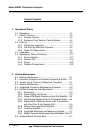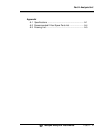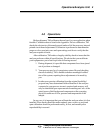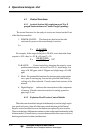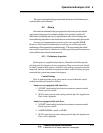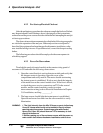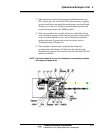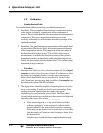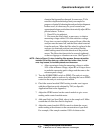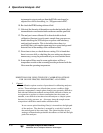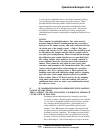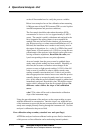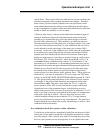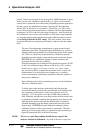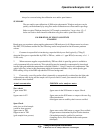
4–6
4 Operations/Analysis Unit
Teledyne Analytical Instruments
A Business Unit of Teledyne Electronic Technologies
4.3 Calibration
Standardization Fluids
Two standardization fluids are necessary to calibrate the analyzer:
1. Zero Fluid: The zero standard fluid must have a composition similar
to the sample, and ideally, contains none of the components of
interest. The zero fluid should be laboratory analyzed to determine its
composition. The exact composition must be known, as the
accuracy of the analysis can be no better than the knowledge of the
standardization fluid.
2. Span Fluid: The span fluid must be representative of the sample fluid
in composition (like the zero fluid), and contain a measured quantity
of the component of interest. The component of interest content of
the fluid should be in the region of 75% to 100% of the range of
measurement. As with the zero fluid, the accuracy of the system is
dependent upon the your knowledge of the span fluid composition.
Ideally, the span sample should contain at least 75% of whatever the
instrument is set up to analyze.
Procedure
1. Introduce zero fluid (see above) into the sample cell. Flow liquid
samples into the cell at a flow rate of about 50 cc/minute to allow
the sample to completely flush to a steady state concentration.
Make certain that bubbles are not introduced or formed in the
cell. (Some back-pressure may help avoid this.) Gas samples can
be introduced at about 200-500 cc/minute.
2. The digital meter should be capable of adjusting the zero level to
an on scale reading. Consult section for zero functioning. If the
reading cannot be adjusted then the signals will require
rebalancing for your particular process fluid. The filter wheel
located inside the detector module must be removed and balanced
optically with screens. See section:___________
b. If the measuring peak is so far out of balance with the
reference peak that1 it can no longer be adjusted with
potentiometer R3, the optical filters require re-screening.
If the analyzer has been in use for some time, it is possible
that the sample cell windows need cleaning or that a filter
has deteriorated.
Another cause of peak imbalance might be that the sample



